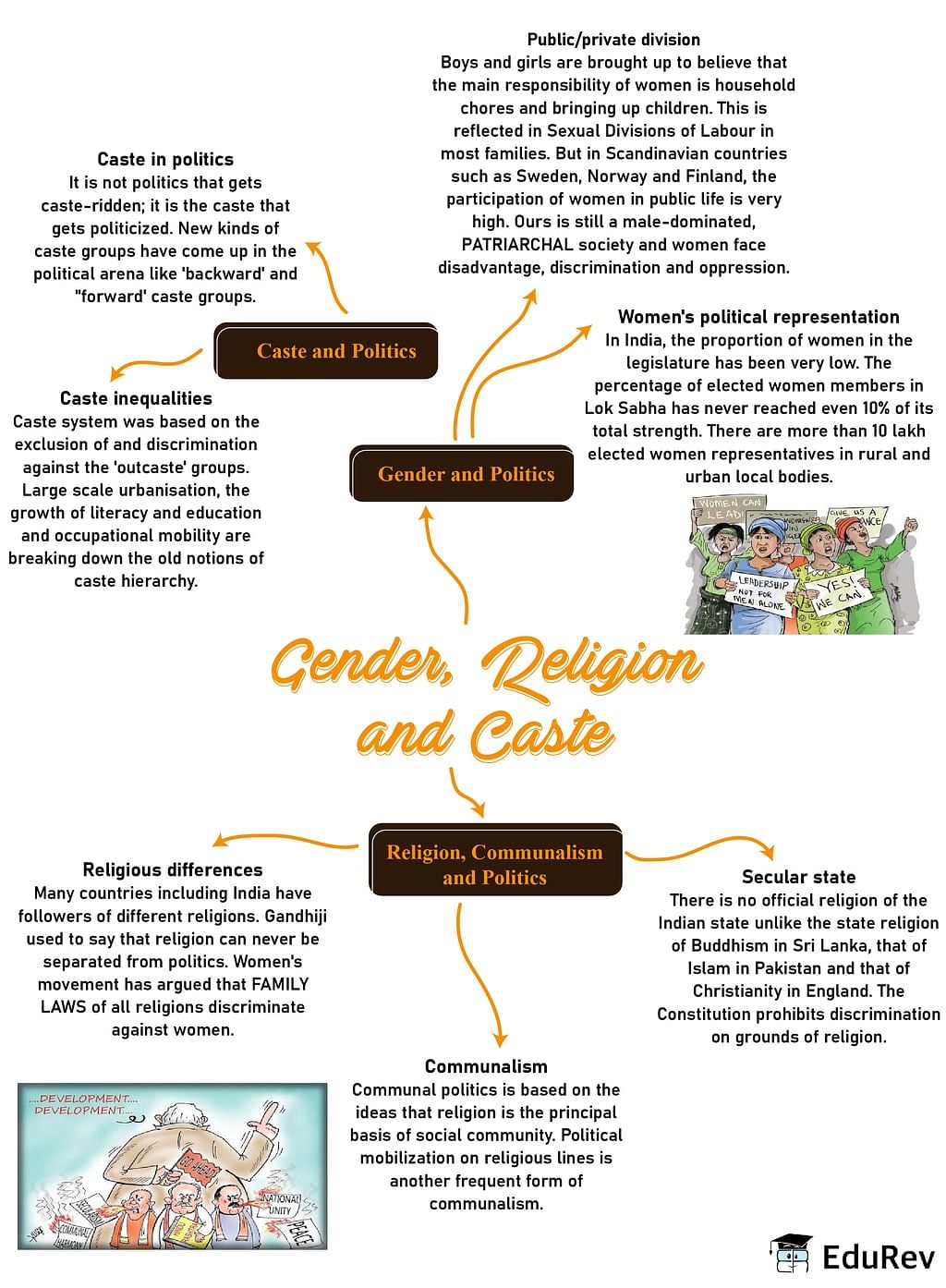Class 10 Exam > Class 10 Notes > Social Studies (SST) Class 10 > Mindmap: Gender, Religion & Caste
Mindmap: Gender, Religion & Caste | Social Studies (SST) Class 10 PDF Download

The document Mindmap: Gender, Religion & Caste | Social Studies (SST) Class 10 is a part of the Class 10 Course Social Studies (SST) Class 10.
All you need of Class 10 at this link: Class 10
|
63 videos|445 docs|87 tests
|
FAQs on Mindmap: Gender, Religion & Caste - Social Studies (SST) Class 10
| 1. What is the relationship between gender and religion? |  |
Ans. The relationship between gender and religion varies across different cultures and religious beliefs. In some religions, traditional gender roles and norms are deeply ingrained, often leading to the subordination or exclusion of women. However, other religious traditions promote gender equality and inclusivity, emphasizing the spiritual worth and capabilities of both men and women.
| 2. How does religion influence caste systems? |  |
Ans. Religion plays a significant role in influencing caste systems in certain societies. In some religious traditions, the caste system is considered a divine order, where each caste has specific duties and responsibilities. This religious endorsement perpetuates social stratification and discrimination based on caste. However, in other religious philosophies, there is a rejection of caste-based discrimination and a call for social equality.
| 3. What are the major challenges faced by individuals belonging to marginalized genders and castes? |  |
Ans. Individuals belonging to marginalized genders and castes often face numerous challenges, including social exclusion, limited access to education and employment opportunities, discrimination, violence, and limited representation in decision-making processes. These challenges stem from deeply entrenched societal norms, prejudices, and structural inequalities.
| 4. How can religions promote gender and caste equality? |  |
Ans. Religions can promote gender and caste equality by reinterpreting and reimagining religious texts and teachings to challenge discriminatory practices and beliefs. Religious leaders can play a crucial role in fostering inclusive communities by preaching equality, advocating for social justice, and actively working to dismantle discriminatory systems. Additionally, education and awareness within religious communities can help challenge rigid gender and caste roles.
| 5. What is the role of intersectionality in understanding gender, religion, and caste? |  |
Ans. Intersectionality recognizes that individuals' experiences of gender, religion, and caste are not isolated but interconnected. It acknowledges that individuals can face multiple forms of oppression and discrimination simultaneously, which can compound their marginalization. Understanding intersectionality helps in recognizing the complex and interlinked nature of social hierarchies and enables us to address the specific needs and challenges faced by individuals at the intersections of gender, religion, and caste.

|
Explore Courses for Class 10 exam
|

|
Signup for Free!
Signup to see your scores go up within 7 days! Learn & Practice with 1000+ FREE Notes, Videos & Tests.
Related Searches

















